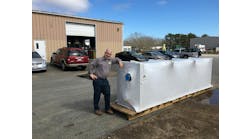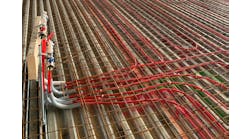For years, energy efficiency in the HVAC world was difficult and confusing from the contractor’s perspective. Products were expensive (compared to standard efficiency equivalents), highly technical and required a lot of specific training to install, set up and troubleshoot. The number of contractors who had access (and time) to become familiar with the nuances of these products were few. Practically speaking, it was challenging for a professional contractor to run his business andbe up to date with these high-tech products. Furthering these obstacles was the simple fact that the vast majority of his customers were purchasing on price and any investment in time and resources to acquire the specific knowledge necessary to adequately install and service these products was unlikely to pay off anytime soon.
With the advent of simpler, user-friendly, high-efficiency components, the opportunity for contractors to provide these alternatives has grown. Our industry has shifted its focus to much simpler programmable thermostats, plug-and-play weather-responsive controls, wall-hung boilers that can condense and modulate, and tankless water heaters that finally deliver the long promised “endless hot water.” These types of products allow a professional contractor to offer energy efficiency without vast investments in training or a fundamental change to his business model.
Manufacturers have also gotten the message that while homeowners and end users will pay a premium for higher efficiencies, there has to be a reasonable return on investment in a reasonable period of time. As a result, component costs have come down and are far more accessible to the typical end user. Energy efficient products have also become easily retro-fitted. Where historically these products required major alterations to the system or even the building, now components can, in many cases, simply be swapped out for more energy efficient versions.
Finally, performance is as good, or better, than advertised. In the past, installers had to hunt down a suitable or ideal application for high-efficiency products to deliver advertised or promised savings. Often installation of these products resulted in an installer tracking down differing site conditions that diluted the promised savings. Now simple, easy-to-use products can deliver at or above promised efficiencies across a wide range of site variables.
Distribution efficiency is a prime example of these advances. Reducing the number of circulators on an installation can greatly reduced consumed electricity costs. Advances in better performing, lower power consuming zone valves or non-electric thermostatic valves can improve efficiencies quickly and at a limited cost. Simple “Plug and Play” variable speed, ECM circulators that bolt in and wire up just like typical asynchronus pumps can reduce power consumption by 80%-90%. Some of these units require little or no setup or programming (one-button setup).
Perhaps the greatest net effect of all of these innovations on our industry is that quality installers can provide the expertise, opportunity, and an avenue to market for energy efficient products and still offer their customers value, reliable systems, and the comfort they desire.
Contractors have long been the best conduit to the marketplace for new products. Responsive manufacturers who continue to provide high-efficiency products, at prices acceptable to the market and offer them in an easy-to-use format will continue to be embraced by installers at large. Contractors who embrace this more user-friendly, high-efficiency technology will separate themselves from the competition, offer more value to their customers, and stay ahead of the curve in our rapidly expanding business.
Mark J. D’Agostino is vice president of sales & marketing for Wilo USA LLC in Rosemont, Ill. He started in the business selling boilers for a New Jersey wholesaler, project managed for a Denver plumbing and mechanical contractor, and worked as a manufacturers rep before joining Wilo in 2007. He can be reached at [email protected].

